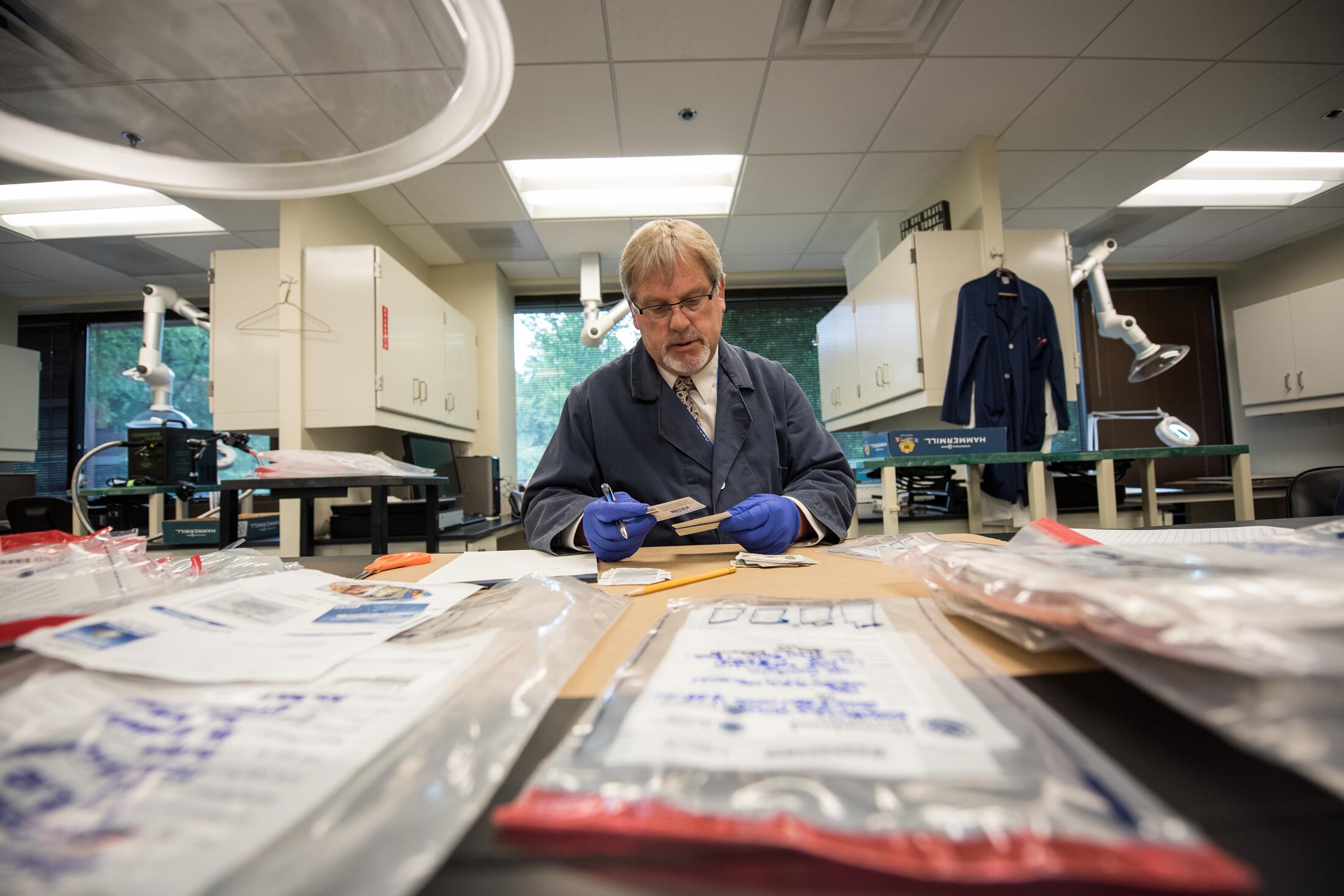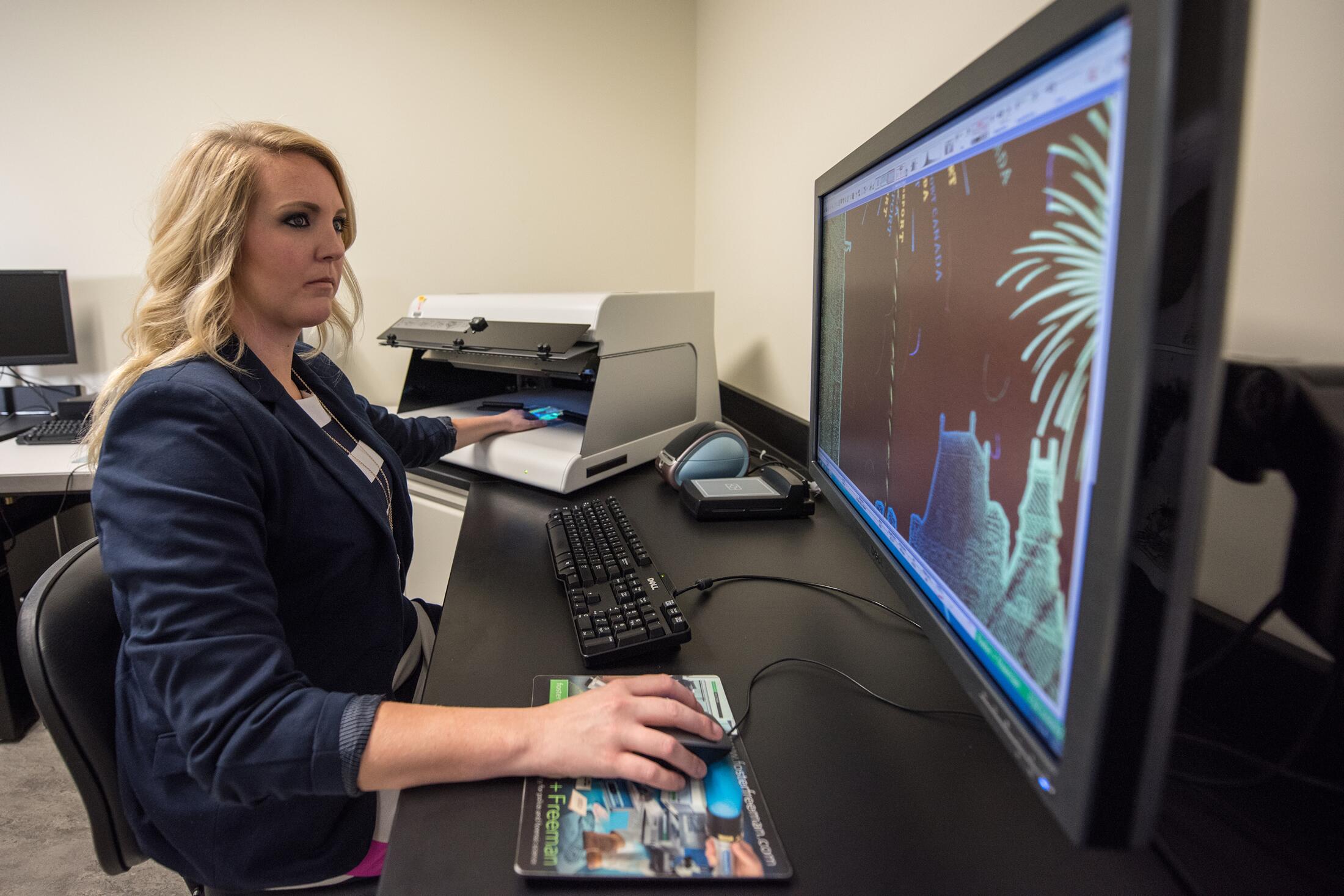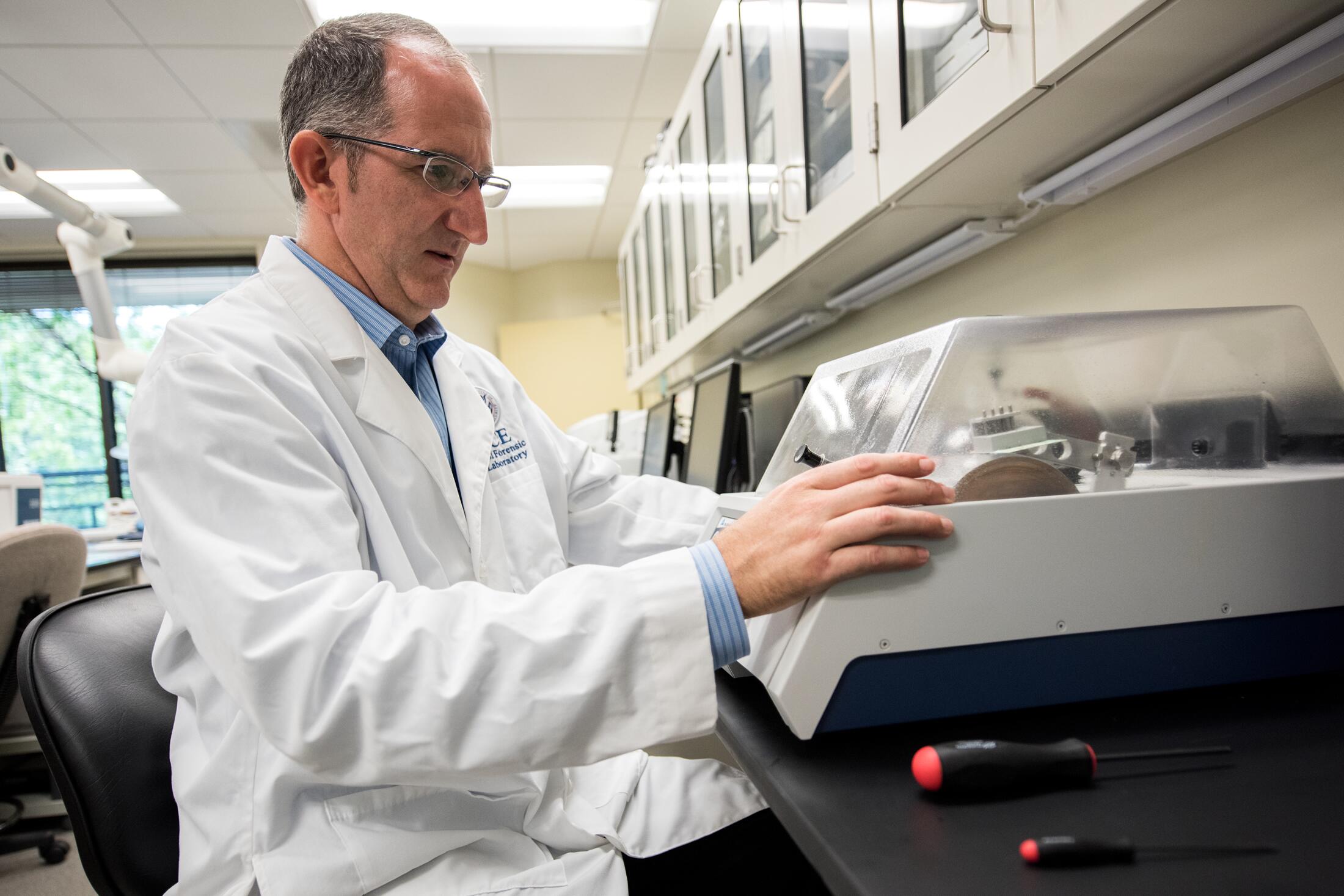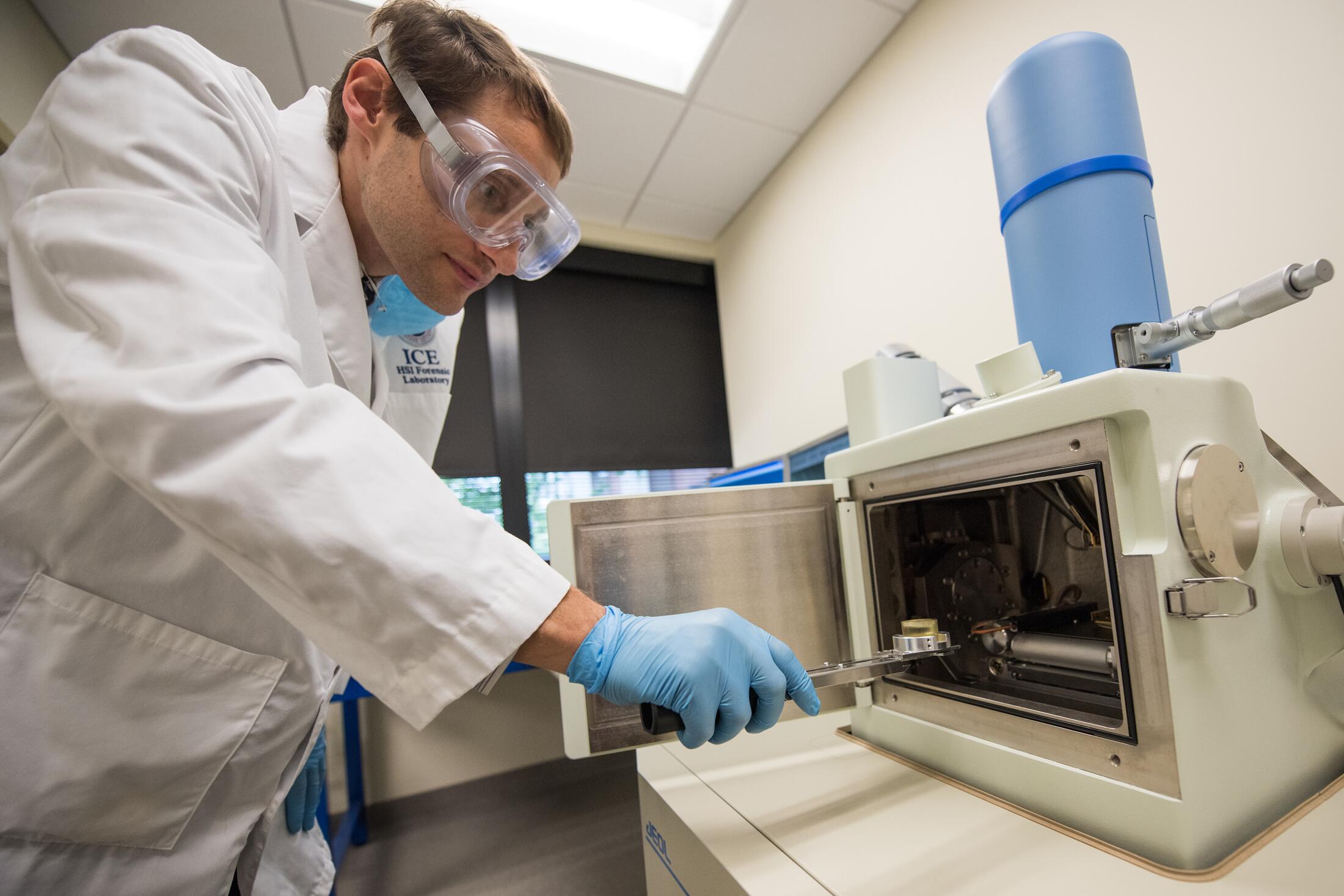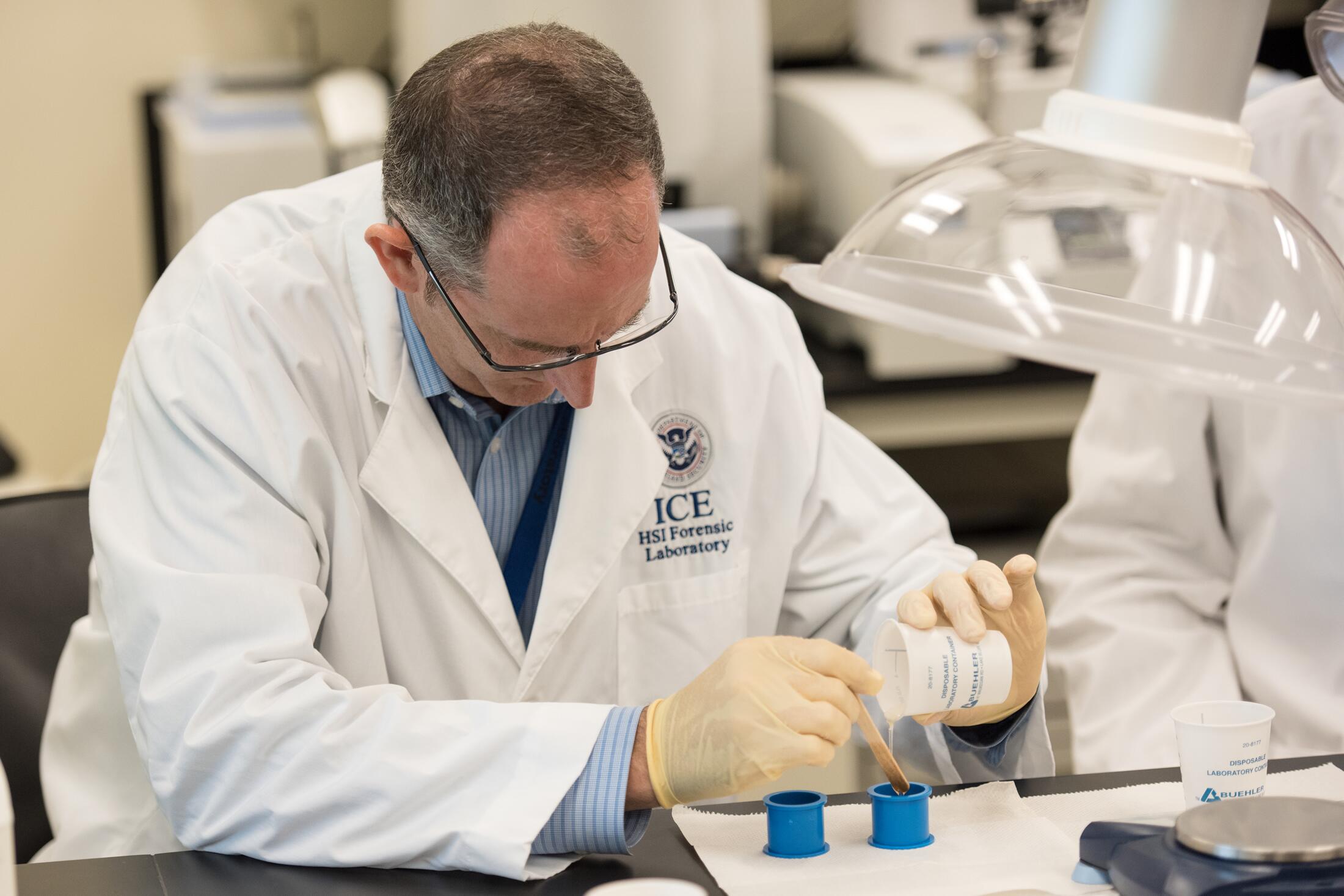Forty Years of Forensically Speaking
In 1979, when the Assistant Commissioner for Intelligence at the U.S. Immigration and Naturalization Service (INS) realized the importance in determining the authenticity of travel and identity documents, he took it upon himself to actively lobby members of the INS Executive Team for the creation of a forensic capability within INS. After receiving approval, he visited other federal laboratories to learn how to establish a forensic laboratory and recruit qualified personnel. The Fraudulent Document Laboratory officially “opened its doors” for business in May 1980. With a mere staff of three forensic document examiners, the need for additional positions quickly became apparent as the demand for its services grew. Its name evolved into the Forensic Document Laboratory (FDL) and the laboratory relocated office space in 1982 and then again, to its present facility in 1989.

The FDL’s first intelligence officer was hired in 1985, to support field training and serve as a government liaison. And in 1987, the first fingerprint specialist and forensic photographer were hired as a result of President Ronald Reagan’s Anti-Crime Initiative.
As staffing steadily increased, the laboratory’s Latent Print, Questioned Document and Operations (formerly Intelligence) sections were well on their way to being established. Additional office space was acquired in 1998, adding 4,800 square feet to the 16,200 square foot facility, and the laboratory obtained its initial accreditation by the American Society of Crime Laboratory Directors Laboratory Accreditation Board (ASCLD/LAB) in February 2001.
In the darkest of days following the September 11, 2001 terrorist attacks, the FBI sought assistance from the FDL to examine several Saudi Arabian passports linked to the hijackers, including those recovered from the Flight 93 crash site in Shanksville, Pennsylvania.
Forensic examination and analysis by the FDL determined the passports, as well as the visas contained inside them, were genuine. With the March 1, 2003 transition of the INS from the Department of Justice (DOJ) into the Department of Homeland Security (DHS), the laboratory took on initiatives supporting the overall DHS mission of protecting the country against terrorism as well as expanding its customer base to include criminal investigators and other law enforcement personnel of the U.S. Customs Service and Federal Protective Service.
Over the next 10 years, the volume and complexity of cases submitted to the FDL continued to grow substantially. In 2012, the laboratory obtained enhanced accreditation by the ANSI National Accreditation Board (ANAB) under the International Standard ISO/IEC 17025 General Requirements for the Competence of Testing and Calibration Laboratories and was officially renamed the Homeland Security Investigations (HSI) Forensic Laboratory, as it now supported every type of case that DHS, ICE and HSI investigates.
The laboratory’s services were expanded further in 2013, with the acquisition of the HSI Polygraph Program. To accommodate the rapidly increasing caseload and diversity of services used in support of the HSI mission, in April 2016, the HSI Forensic Laboratory completed a four-year, $3 million multi-phase renovation project. What resulted was not only an expanded workspace to nearly 40,000 square feet, but a significant advance in its capabilities to include chemistry, research and development and digital multimedia.
Forty years after its humble beginnings and still tucked away in an undisclosed location amongst shopping malls and corporate offices, the HSI Forensic Laboratory remains the only U.S. crime laboratory specializing in the scientific authentication, testing, research and analysis of travel and identity documents as well as other related issues.
The laboratory’s one-of-a-kind reference library contains more than 332,000 items, including genuine exemplars, altered and counterfeit documents, prototypes, intelligence alerts, and training and reference materials used to support DHS, ICE, HSI and other U.S. and foreign law enforcement. It’s comprised of vast years of educational, professional, and scientific experience, and the laboratory’s highly dedicated workforce takes great pride in its unique forensic capabilities and distinguished record in providing high quality work-products and support to those who use its services.
The HSI Forensic Laboratory Operations Unit
The Operations Unit of the HSI Forensic Laboratory aims to get information out of the laboratory to frontline personnel. With technology constantly evolving, the mission of the Operations Unit is to keep updated on current trends to combat fraud in identification and travel documents.
To do this, the Operations Unit puts out different bulletins on current fraud issues. Document intelligence alerts cover a single topic, whether it’s the introduction of a new document that HSI personnel will see or a noteworthy fraudulent document that special agents may encounter.
Document reference guides cover topics of interest in more detail. They might cover documents from specific countries (most recently on identifying passports issued by the Houthi rebels in Yemen) or documents associated with a crime (such as documents associated with West African fraud networks).
The Operations Unit also develops and provides training. This training addresses current trends in fraud seen both at the HSI Forensic Laboratory and in the field. While it remains to be seen how the training program will work in the post-COVID environment, the unit is developing a community in Microsoft Teams to share document information between field personnel and the laboratory. The unit can also provide virtual training on fraud issues.
The HSI Forensic Laboratory maintains an extensive library of over 332,000 genuine, counterfeit, and altered travel and identity documents and related reference materials. This library is unique within the federal government and remains the premier resource for the scientific authentication, research, and analysis for such documents and issues.
Forensic examiners use the library to authenticate documents and to examine known methods of counterfeiting and alteration. Operations personnel use the library to prepare training materials, produce document intelligence alerts and reference guides, and answer real-time requests from the field. Other agencies, such as the Department of State, rely on the laboratory’s library for research and reference.
The HSI Forensic Laboratory Latent Print Unit
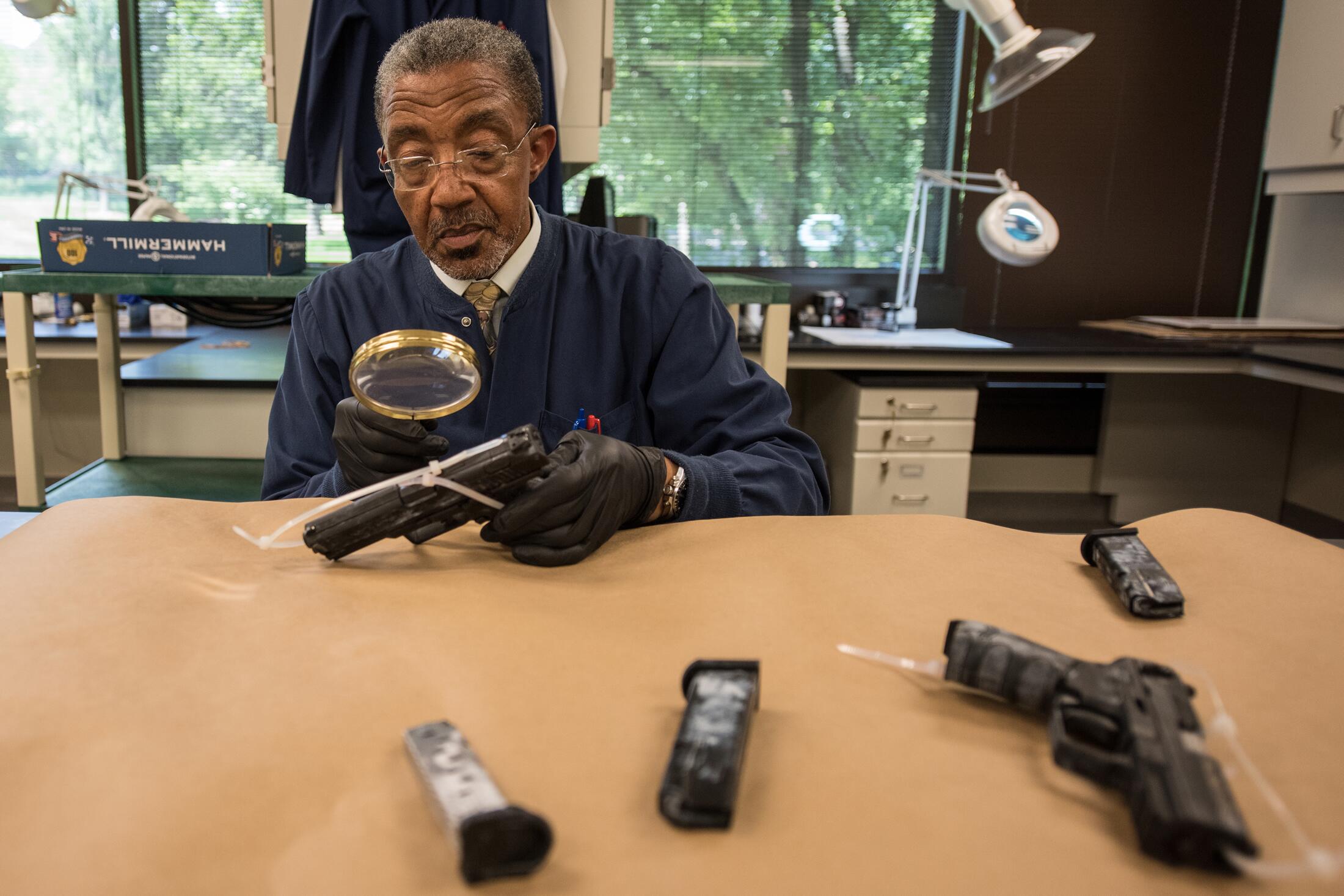
HSI fingerprint specialists spend most of their day looking through magnifiers at friction ridges – tiny raised portions of skin that are present on our fingers, palms and feet. The variation in the characteristics, combination, space and position of these friction ridges between individuals make fingerprint evidence an extremely effective tool in identifying or eliminating subjects. (Even identical twins have different prints.)
Latent prints are an excellent source of evidence as they show a distinct correlation between two objects. When fingerprints are identified to a subject, it indicates that object was directly handled by that individual. From processing firearms and rounds of ammunition found concealed in a home, to separating the hundreds of layers of plastic wrap, tape, and miscellaneous packaging from narcotics or currency bundles, and examining notebooks full of stolen PII and financial information, fingerprint specialists look for the small details to provide support across a wide range of investigations.
The Latent Print Unit also has the ability to access several national Automated Fingerprint Identification System (AFIS) databases, including the FBI’s Next Generation Identification criminal and civil repositories and the DHS Office of Biometric Identity Management IDENT system, which operates the largest biometric repository in the U.S. containing more than 250 million immigrant identities.
In today’s age of social media and digital identity, an increasing number of photographs taken during the commission of a crime are being uploaded to the internet. Fingerprint specialists can take these images and enhance the ridge detail to compare to known subjects or search through AFIS databases. Cases submitted to combat child exploitation have led to several success stories in identifying previously unknown subjects in these investigations.
Fingerprint specialists also conduct examinations on documents containing inked impressions to confirm identity. Examiners regularly testify as expert witnesses, provide crime scene assistance and conduct forensic training when requested.
The HSI Forensic Laboratory Questioned Document Unit
The Questioned Document Unit of the HSI Forensic Laboratory offers a full range of forensic examinations that can provide valuable assistance to investigations.
The forensic document examiners (FDEs) conduct microscopic and comparative analyses using a wide range of specialized light sources at various wavelengths to determine the authenticity of travel and identity documents. These analyses may also reveal that a document has been altered and occasionally decipher the original entries on the document.
While the authentication of travel and identity documents is the most well-known category of analysis conducted by the HSI Forensic Laboratory’s examiners, they may use other technology in cases involving document evidence.
Using an Electrostatic Detection Apparatus, documents can be examined for the presence of indented writing where it leaves impressions on paper underneath the written document. Typical examinations involving indented writing include a handwritten item in a notebook that is suspected to be the document’s source. It can also lead to the investigator connecting a group of seemingly unrelated documents.
Indented writing is not the sole means of linking documents. On occasion, FDEs can relate counterfeit documents to a common source.
This may be accomplished through documenting the presence of printer-produced defects unique to a piece of machinery that is present on multiple documents. In other cases, documents may be linked through the artwork used as a template for a series of counterfeit documents.
When FDEs find a common source in counterfeit documents, the information is entered into a database at the HSI Forensic Laboratory. The FDEs can refer to that database for any subsequent cases containing similar counterfeit documents to determine if the counterfeits in separate cases can be linked back to a common origin and notify the investigators of the link.
In cases where equipment from a counterfeiting ring has been seized, the FDEs can use a transmitted light source to capture images of the individual color panels on a used thermal ribbon cartridge. This allows for the creation of a catalogue of printed images to aid in determining the type and number of counterfeit documents being produced.
FDEs also conduct comparative handwriting examinations to determine common authorship or for evidence of forgeries. Handwriting examinations may involve questioned signatures, entries on a form or application or can involve extended writing to include letters or journal entries.
The HSI Forensic Laboratory Digital & Multimedia Sciences Section
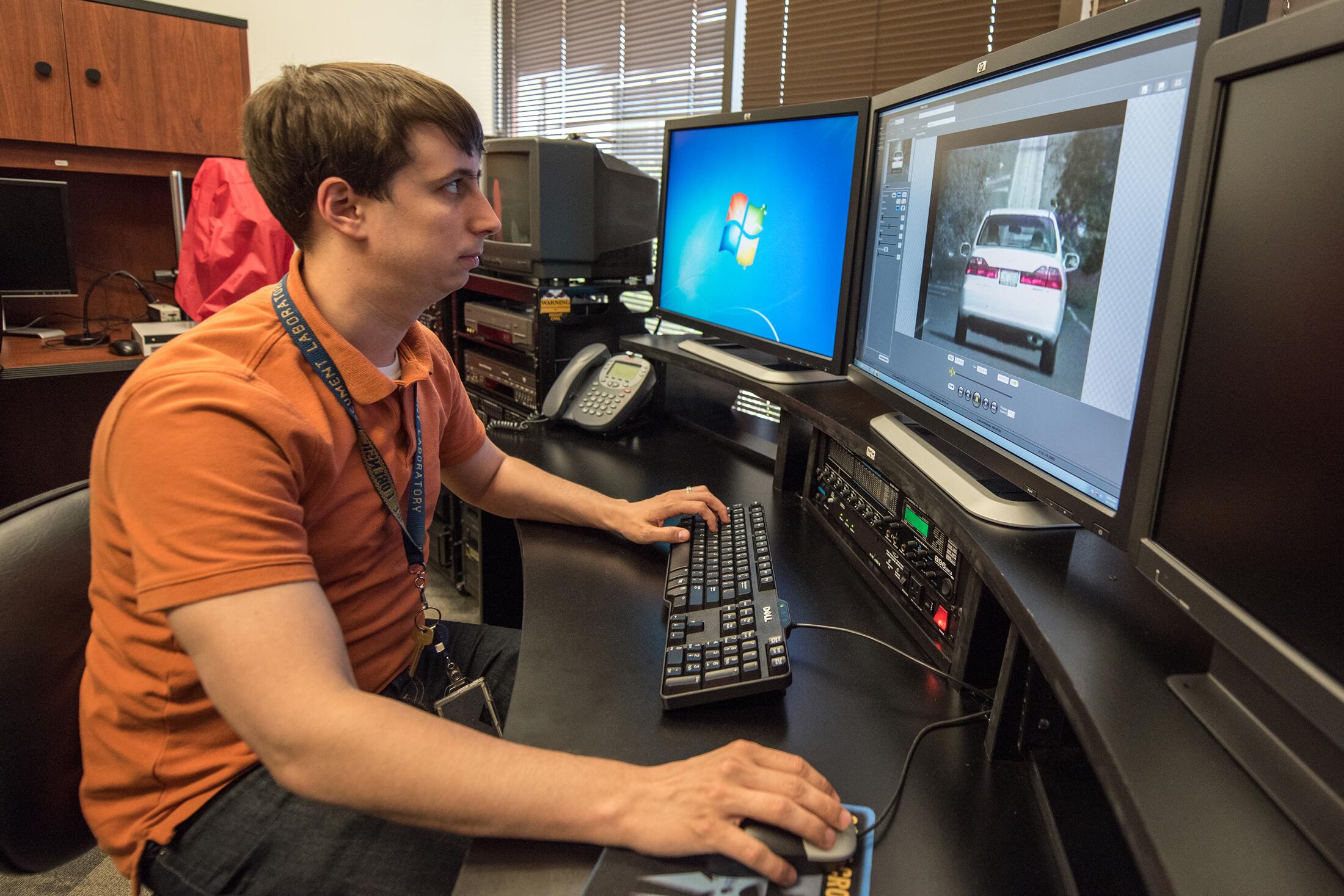
The latest addition to the HSI Forensic Laboratory is the Digital & Multimedia Sciences (DMS) section. Digital multimedia forensic analysts perform a wide range of forensic digital multimedia examinations that can provide valuable assistance to field investigations.
DMS ‘s current capabilities include diverse enhancement techniques for all three media types: image, audio and video. These techniques can be applied to evidence captured from store cameras, cell phone videos and images, ATM cameras, fingerprint images and still photography.
Utilizing these enhancement techniques can have many beneficial results. An image that is underexposed can be brightened to uncover useful content details. Voice recordings with objectionable hum and other noise can benefit from audio enhancement techniques that improve the intelligibility of speech. A shaky video of a vehicle and its license plate can be stabilized to reveal the evidence.
DMS can also perform event timeline synchronization and sequencing to tell a more complete story. For example, synchronizing multiple cameras that record an event allows the tracking of a suspect or vehicle through time and location.
DMS utilizes multiple specialized tools, some of which are only available to law enforcement and government agencies. In the future, DMS is planning to add capabilities such as multimedia authentication, content comparison and basic measurement services in the future.
DMS is currently working toward obtaining accreditation of these services through the ANSI National Accreditation Board (ANAB).
The HSI Polygraph Program
Polygraph is an important tool available to all HSI special agents.
After receiving a polygraph request, an examiner begins reviewing the paperwork associated with the case and consulting with the case agent to determine the appropriate exam format and question strings. The polygraph exam itself takes place in three phases.
During the pre-test phase, an interview is conducted which allows the examiner to thoroughly discuss the purpose of the examination, the examination process, the questions he or she will hear during the exam. The examinee is also afforded the opportunity to make any statements relevant to the topic being examined.
In the second phase, called the "in-test" phase, the components are attached, and physiological data is collected as the questions are presented. The examiner evaluates the charts based on the significance of the physiological changes to each question and renders a decision.
If the subject fails the examination, the third phase, a post-test interrogation, begins.
As a program accredited by the National Center for Credibility Assessment (NCCA), the HSI Polygraph Program has 11 examiners stationed throughout the U.S. They conduct polygraph examinations for HSI but can also conduct exams in support of other federal agencies as well as state and local law enforcement organizations. Child exploitation cases currently comprise the bulk of the domestic workload. They also examine ICE/HSI employees who will have access to national security information and vet foreign law enforcement officers who will be working with ICE/HSI counterparts overseas.
To be considered for an HSI polygraph examiner position, prospective examiners must have a bachelor's degree and five years’ experience as a GS-1811. At the time of application to the program, they must be a current HSI special agent. Once selected, candidates complete a 14-week course at NCCA. Upon graduation, the examiner is required to conduct a minimum of 35 polygraph examinations that must be monitored or reviewed by a fully qualified examiner. Examiners must also meet a 40-hour continuing education requirement every fiscal year. All polygraph program work is scrutinized during the NCCA accreditation process every other year.
Although the examiners are physically located in various HSI field offices, they report directly to the Laboratory, which is part of the Investigative Services Division. Working as an examiner is a full-time job supporting the field and promoting the program.
HSI Forensic Laboratory Evidence Recovery Team
For years, HSI investigators relied on trial and error in processing, collecting and preserving evidence. Unless a qualified crime scene investigator was available to assist, case agents would collect viable evidence to the best of their ability and send it to a forensic laboratory for analysis. This process, while acceptable, was not always the most effective.
Forensic evidence has become an important component in comprehensive investigations. As a result, the HSI Forensic Laboratory Evidence Recovery Team (ERT) program was created to provide uniformity and consistency within the agency in the processing, collection, documentation, and preservation of forensic evidence during an investigation.
The program further aims to deploy trained HSI ERT personnel to crime scenes to assist in large-scale investigations. The ERT can aide the case agent in areas such as photography, sketching, DNA collection, latent print processing and overall evidence collection.
The HSI Forensic Laboratory manages the ERT Program. Currently, there are four HSI ERT’s located throughout the United States in the following special agent in charge offices: Phoenix, San Diego, San Juan and Seattle. Each office has members dispersed throughout their specific AOR, thus assisting larger areas.
ERT participation is a collateral duty in which program volunteers must undergo extensive mandatory training. The teams must abide by and follow the ERT Handbook, located on HSINET and signed by Executive Associate Director Peter Edge in 2014.
In the future, expansion and extensive program changes will be forthcoming.
